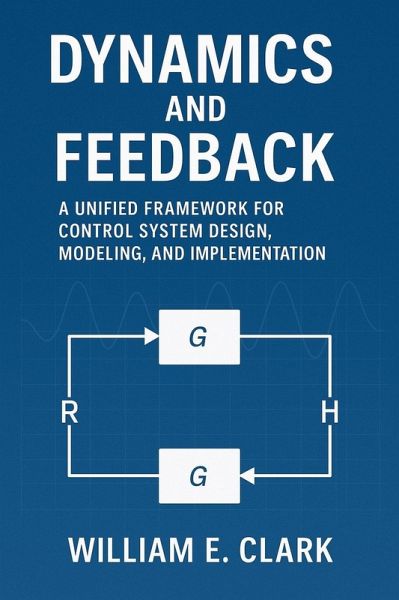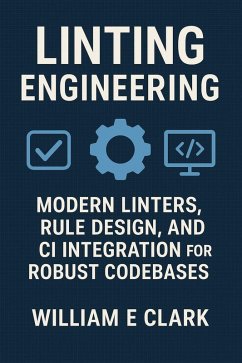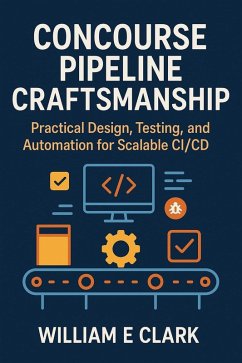
Dynamics and Feedback: A Unified Framework for Control System Design, Modeling, and Implementation (eBook, ePUB)

PAYBACK Punkte
0 °P sammeln!
Dynamics and Feedback: A Unified Framework for Control System Design, Modeling, and Implementation presents a coherent and rigorous introduction to the principles that govern dynamic systems and their regulation. Beginning with system classification, modeling paradigms, and the fundamentals of feedback, the book leads readers through differential and difference equation representations, block diagram algebra, and state-space formulations that unify continuous and discrete-time perspectives. Emphasis on clear mathematical foundations ensures a solid grasp of stability, performance, and sensitiv...
Dynamics and Feedback: A Unified Framework for Control System Design, Modeling, and Implementation presents a coherent and rigorous introduction to the principles that govern dynamic systems and their regulation. Beginning with system classification, modeling paradigms, and the fundamentals of feedback, the book leads readers through differential and difference equation representations, block diagram algebra, and state-space formulations that unify continuous and discrete-time perspectives. Emphasis on clear mathematical foundations ensures a solid grasp of stability, performance, and sensitivity before moving to practical design tools.
Building on these foundations, the text systematically develops both classical and modern design methods: time- and frequency-domain analyses, root locus and Nyquist techniques, PID tuning and compensator synthesis, as well as state-space concepts of controllability, observability, optimal control, and state estimation. Throughout, the narrative bridges theory and practice, showing how to linearize nonlinear dynamics, identify models from data, and manage multivariable interactions and robustness concerns in high-order systems. Worked examples and problem-solving strategies make advanced topics accessible while preparing readers for real-world implementation challenges.
Reflecting contemporary advances, the final sections treat digital and discrete-time control, nonlinear and adaptive architectures, model predictive and distributed control, and the integration of AI and machine learning into cyber-physical and autonomous systems. Special attention is given to fault tolerance, robustness, and the practicalities of implementation, from sensor/actuator constraints to software-hardware co-design. Designed for students, researchers, and practicing engineers, this unified framework equips readers to design, analyze, and implement control systems across a wide range of emerging applications.
Building on these foundations, the text systematically develops both classical and modern design methods: time- and frequency-domain analyses, root locus and Nyquist techniques, PID tuning and compensator synthesis, as well as state-space concepts of controllability, observability, optimal control, and state estimation. Throughout, the narrative bridges theory and practice, showing how to linearize nonlinear dynamics, identify models from data, and manage multivariable interactions and robustness concerns in high-order systems. Worked examples and problem-solving strategies make advanced topics accessible while preparing readers for real-world implementation challenges.
Reflecting contemporary advances, the final sections treat digital and discrete-time control, nonlinear and adaptive architectures, model predictive and distributed control, and the integration of AI and machine learning into cyber-physical and autonomous systems. Special attention is given to fault tolerance, robustness, and the practicalities of implementation, from sensor/actuator constraints to software-hardware co-design. Designed for students, researchers, and practicing engineers, this unified framework equips readers to design, analyze, and implement control systems across a wide range of emerging applications.
Dieser Download kann aus rechtlichen Gründen nur mit Rechnungsadresse in A, B, CY, CZ, D, DK, EW, E, FIN, F, GR, H, IRL, I, LT, L, LR, M, NL, PL, P, R, S, SLO, SK ausgeliefert werden.













